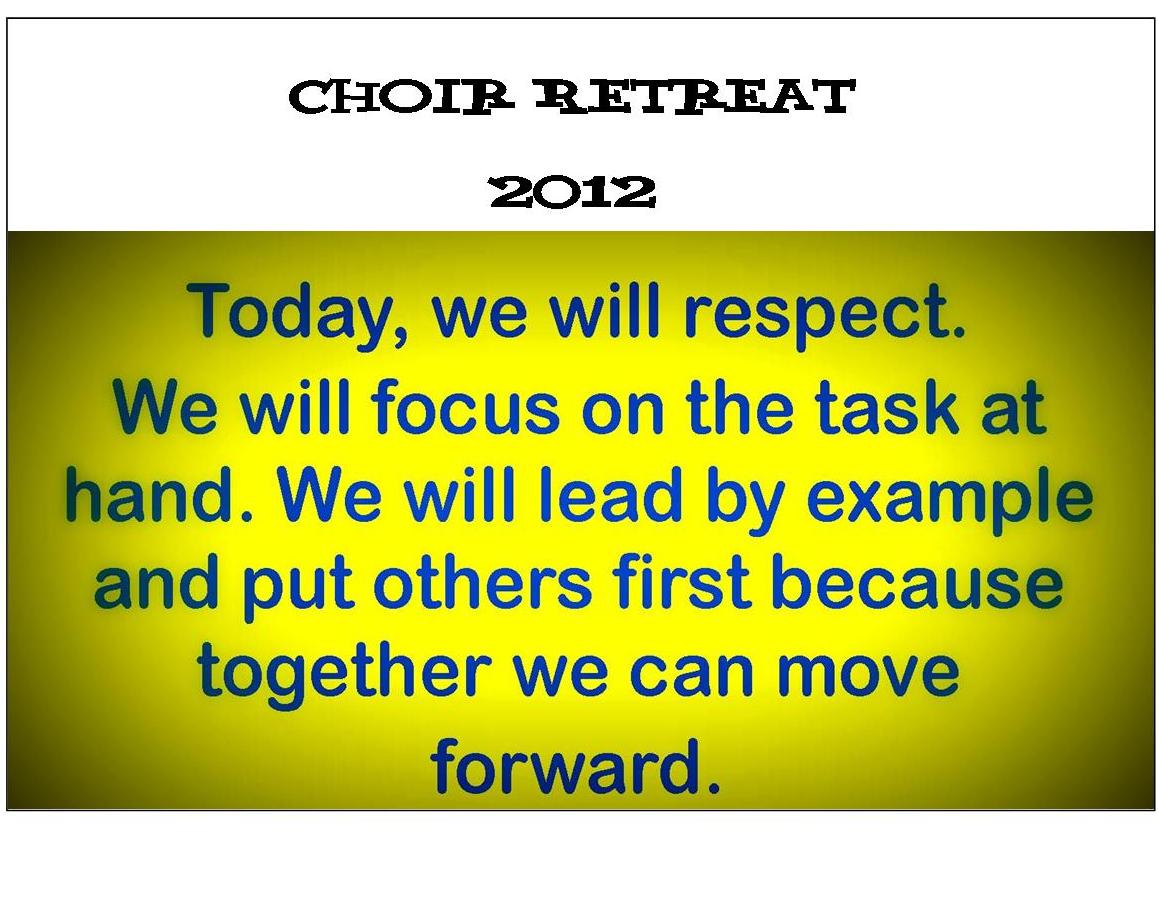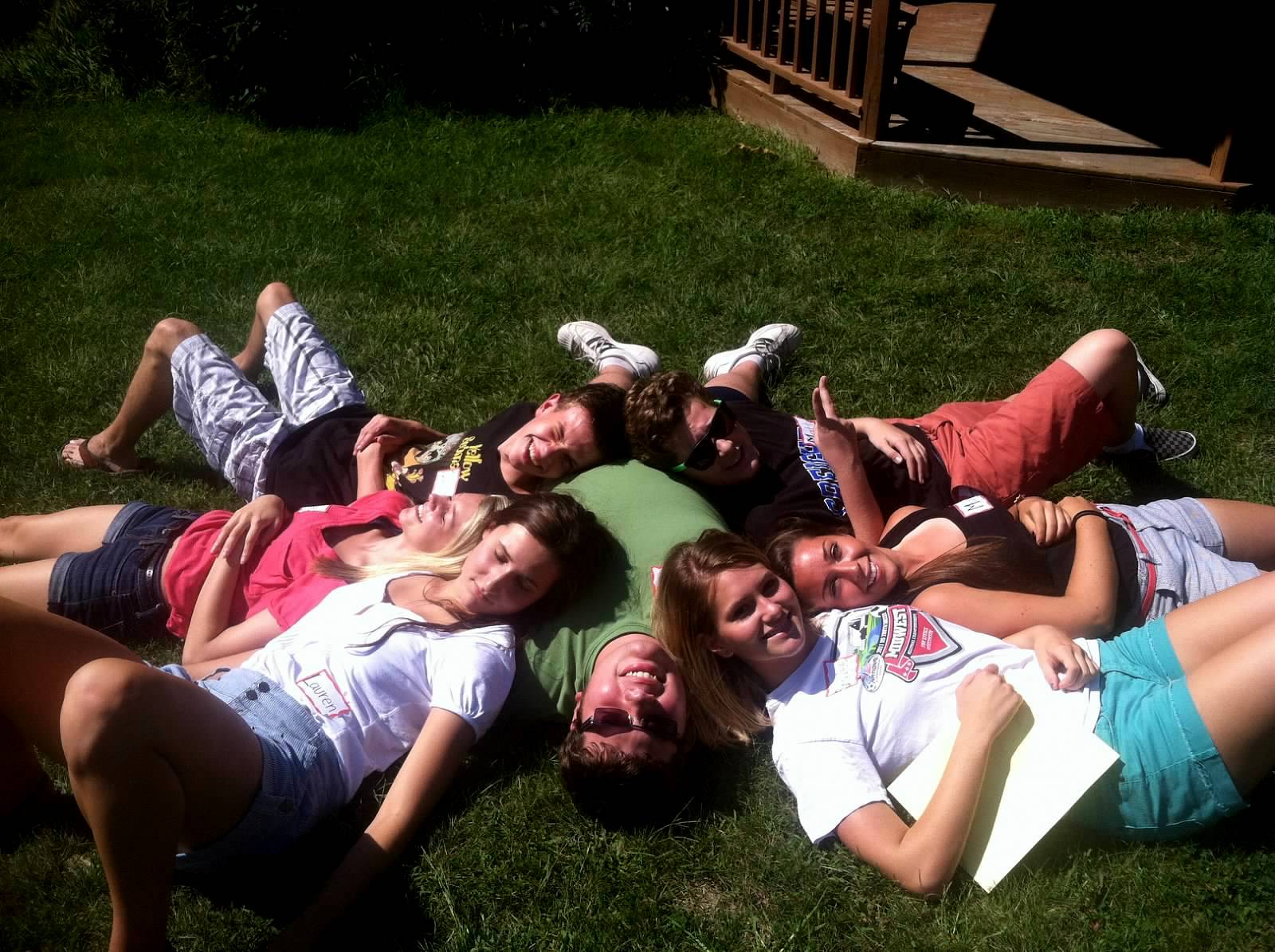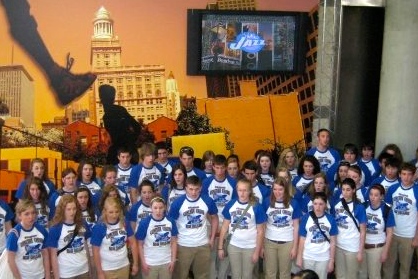As I stated in a previous writing, I bring helpers/chaperones/section leaders with me to assist in facilitating the retreats. I believe singers sometimes have “director deafness” so I try to mix it up a bit by bringing in a “new voice” to help the singers. Many times I enlist the aid of former singers who are either majoring in music education or who are good musicians & singers. This is excellent “on the job” training for those college students considering a field in music education or music ministry. I will not invite former singers to assist until they are out of high school at least two years. (I prefer juniors or seniors in college.) I need those college-age musicians to run effective rehearsals and be good chaperones. If they are too close in age to the high school singers, the young collegiate student sometimes has a hard time navigating that leadership responsibility. The team building person I have used most over the course of 20 years happens to be a music educator, colleague and a former student. He taught at the high school choir for 15 years and has taken time, on and off for the past 10 years, to assist me at my fall retreat. I have also used area youth ministers and young people employed by our local YMCA who are trained in group/team building techniques. Don’t forget to contact area college choir departments to get names of music education majors (junior or seniors) who might be interested in helping you for a day or two.
The attached two-day retreat itinerary was used for group/team building only and was a non-singing retreat. The one-day retreat schedule was used for both group building and choir rehearsal time. A well planned rehearsal schedule/itinerary is very important BUT flexibility is the name of the game when executing the day(s) activities. Sometimes activities or rehearsals go longer than anticipated or things just don’t go as planned. You need to be able to adjust your focus or time and move on. Keep the students busy and do not give them more than a 30 minute for a break. If you are in a retreat center, it is also important to put parameters around the students options of what they can do during the break…where they can and cannot go in the retreat center, etc. making sure the singers understand they are guests in the building.
WHAT TO I DO ABOUT THE USE OF CELL PHONES AT THE RETREAT? Since the focus of the retreat will be person to person – getting to know each other activities, I do not allow my singers to have their cell phones on their body. I try to keep this request as positive as possible. After I explain my reasoning to the singers, most are completely at ease with my decision. I rarely have any grumbling. If I do, the rest of the singers usually put a kibosh to the complaining. I put a 8 foot table near the activity area and ask each singer to turn off his/her phones (not on vibrate) and put it on the table. This way you and the singer knows where his/her phone is during the retreat. If you want to allow the students to be able to check their phones during the break, you can do that but I usually don’t let the singers have their phones until we climb onto the bus to go home. I also do not allow use of the phones during meal times. Whether you plan a dinner time activity or just let the singers talk, meal time is community building too. One of my favorite mealtime activities to do with singers is called WRIST TO WRIST. I assign each singer a choir brother or sister. This pairing stays with them during the year and we do brother/sister activities all year long. Right before their first meal together as brother/sister, I take a ball of string and cut 24″ lengths for the number of pairs you have. I then have each brother/sister stand side by side with inside wrists touching. I take a string and wrap it around both wrists tying the two of them together. I instruct the couple that the wrists must stay tied together during the entire meal. That means they must serve dinner, eat dinner and clean up all with their wrists tied together. Make sure you have a camera and watch the fun begin. The singers can be quite creative and they love the silliness. You can do a short debrifing after dinner by asking what they liked about this activity, what was challenging and what did they learn from this activity that could be applied to choir.
In my next post, I will begin to talk about the three different levels of group building. Each level is important to the team building process. I’ll also give examples of the different activities that work well with each level.
Please see the attachments for examples of retreat schedules/itineraries.
Musically,
Cathy Britton









